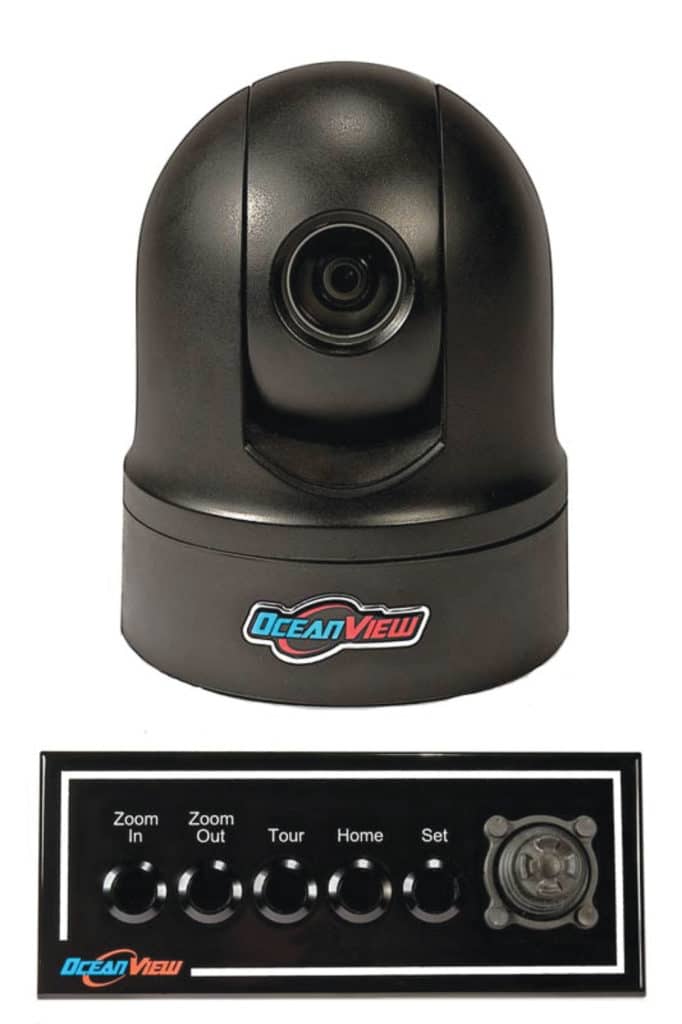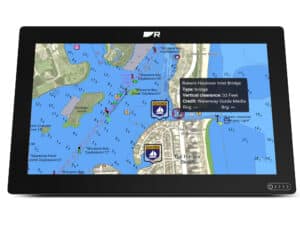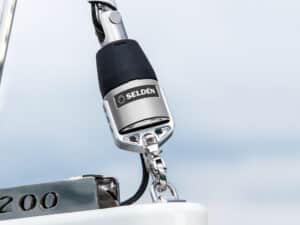What’s the best way to avoid things that go bump in the night? Radar has been the traditional way to see things that hide in darkness or fog, but today we have choices in night-vision hardware that can move cruisers beyond a mere dot on a display screen to knowing exactly what that dot is. It’s important to understand how these different systems function and what their limitations are.
Thanks to widespread use by the military, firefighters and law enforcement, equipment vendors have expanded their product ranges and taken advantage of extensive field experience to help them greatly advance the technology. The result: Consumers have access to great equipment at prices that are now becoming affordable for the cruising sailor.
So exactly how do the various systems work? There are several technologies that give us night-vision capabilities, and they are very different in how they function and what they are capable of doing. Of the options, just two are employed in typical marine night-vision devices.
Basic low-light cameras work much like any digital camera, except they lack the multicolored filters that enable the creation of color photos. Leaving these filters out of the light path enhances the sensitivity to low light levels. The shortcoming is that all the images are in black and white, and typically these devices also have a limited distance range. This technology is typically employed for security cameras, or in on-deck monitoring or machinery-space monitoring on larger yachts.
To improve upon this basic approach, some manufacturers boost performance by amplifying the light captured by the camera, making more imagery visible to the human eye. To put this in perspective, here’s an example of the latest low-light camera technology. One company defines their ultralow-light imager as having a minimum scene-lighting capability of 0.00015 lux. Put in layman’s terms, consider that one lux is defined as the amount of light that falls on a 1-square-meter surface, 1 meter away from a single burning candle. We’re talking very little light here! Envision a candle burning on a clear night that’s visible a half-mile away. That is the sort of amplification we’re addressing.
Finally, we have infrared thermal-imaging technology. Devices using this rely on heat sensing rather than capturing light to deliver night vision. In nature, all objects have a heat signature, even extremely cold things. Thermal cameras sense temperature differentials between objects and, using software algorithms, form images based on those differences.
Within the range of infrared thermal-imaging sensors, we see devices operating at higher or lower frequency levels, with cooled or uncooled sensors. These rather obscure and delicate technical details help determine levels of sensitivity and ultimately price points for this equipment.
Pros and Cons
The best technology choice for the cruising sailor is going to depend largely on the conditions in which it will be used. For example, a heavy Maine coastal fog is going to push the scale clearly toward thermal imaging technology. Fog, after all, blocks your sight, and no matter how much ambient light you have, your visibility is still going to be limited. Water molecules suspended in the air, however, won’t impede the reading of thermal signatures. At the other end of the spectrum, extreme cold encountered during a voyage through the Northwest Passage tilts the scale toward the low-light night-vision devices. In such extreme conditions it’s conceivable that the thermal camera equipment could be subjected to temperatures outside of its designed operating range of minus 25 degrees C (minus 13 F). For most cruisers, this shouldn’t be a problem unless you’re planning a winter at one of the polar ice caps.
As good as low-light amplification technology has become, it still won’t be very effective in a total blackout. I’ve spent some pretty dark nights on the open ocean with overcast skies and no moon. In such conditions, even the best of the low-light technology units would have trouble providing any sort of usable image. The thermal imager is what you’ll want in this situation.
That said, price is always a consideration; the low-light night-vision technology is typically much less expensive than the thermal technology.
To summarize these thoughts, think of it this way — when it comes time to pull the trigger on a system, consider this: Thermal imaging is great for detecting things, but not so adept at actual identification of an object. A good example of how this plays out would be the name of a boat painted on the hull. The thermal imager will easily identify a hull-like form, even at a distance, but the name will be unrecognizable because it has the same temperature as the hull it’s painted on. In contrast, low-light night-vision equipment is much better at clarifying details of what you are looking at once it gets spotted, assuming there’s adequate ambient light.
Integration Enhancements
The newest gear available has some important capabilities when it comes to what it adds to the overall network of navigation tools. The option of interfacing with multifunction navigation displays and wireless connectivity via onboard Wi-Fi is available with some systems. Camera zoom, pan and tilt, and even image stabilization, are now available at the midrange to high end of the price spectrum.
Another really nice, relatively new feature set is what is known as “slew-to-cue” target tracking. Such units can track cued targets and hold them in view either manually or automatically using AIS or MARPA radar targets. The ability to automatically enter into “auto-slew” mode in the event of a man-overboard alarm is also an available feature.
How Far Can I See?
A number of factors will affect how far you can see with any night-vision system. Line of sight plays a primary role, so camera mounting height affects range, but so too does target size. A man overboard is going to be much harder to see at a long distance than a 100-foot motor yacht. At the low end of the feature-price range, vendors say a man overboard could be spotted approximately 1,500 feet, or a quarter nautical mile, from the boat. A good-size motorboat could be seen at a distance of 4,200 feet, or well over a half nautical mile. Some military-grade gear can spot a person in the water nearly 7 miles out and a ship at a more than 11 miles!
Raymarine’s low-light CAM 100 camera, which sells in the $600 to $700 range, is intended for short-range vision, as in monitoring on-deck activities and close-up work like docking or catching a mooring in the middle of the night.
Most entry level, on-the-water-capable night-vision gear starts at about $3,500. This will get you into a basic fixed-mount Flir model MD-324 unit with 320×240 resolution. For about $1,000 more, you can get the Flir model 625 unit, which is essentially the same system but with twice the resolution (640×480). Both of these units offer thermal imaging only. If you anticipate needing low-light capability, you may want to consider some of the units available from Flir, OceanView and Raymarine that employ both technologies in a single unit.
To learn more about these units, including prices, check out the following Web sources: www.flir.com and www.raymarine.com/nightvision.
If you sail often at night or along coastlines where thick fog is prevalent, a thermal-imaging or low-light device will give you an additional set of eyes that be can quite effective in helping you avoid surprises that go bump in the night.
Ed’s Tech Tip
Many cruising sailors aspire to being the ultimate do-it-yourselfers. This is fine, but when it comes to hooking up a sophisticated vision system, as with radar and SSB radios, I feel that it’s best to bring in a trained expert to get the installation and initial calibration done correctly. Unless you have a good deal of experience with this sort of work, I don’t recommend that you try this on your own.
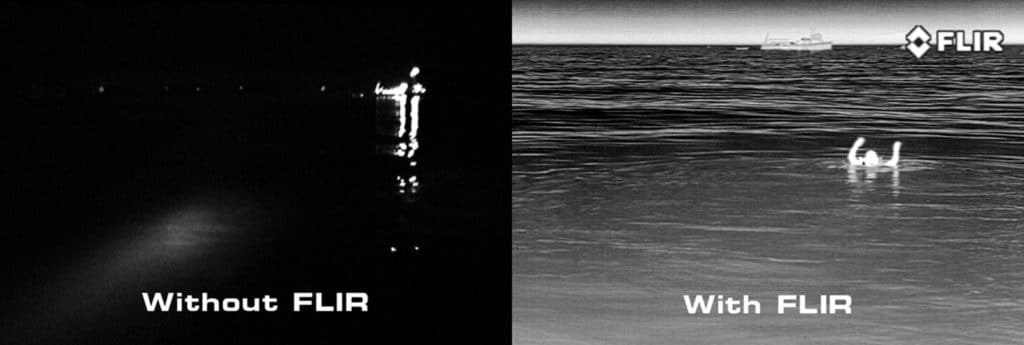
With and Without Flir Technology
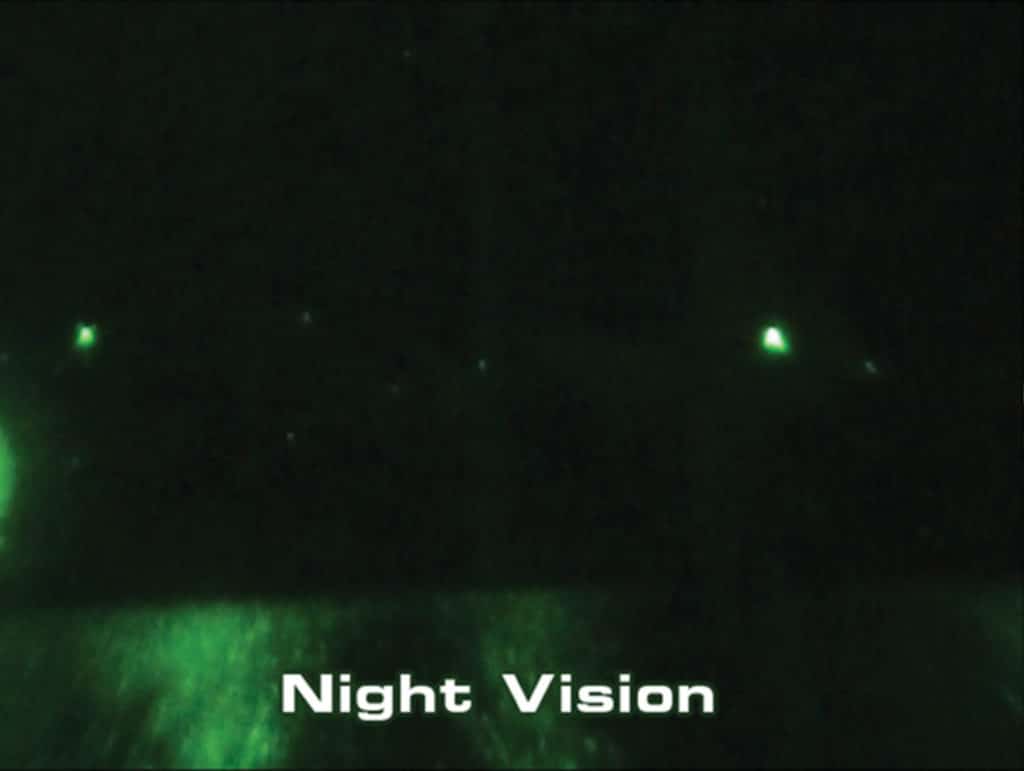
Night Vision
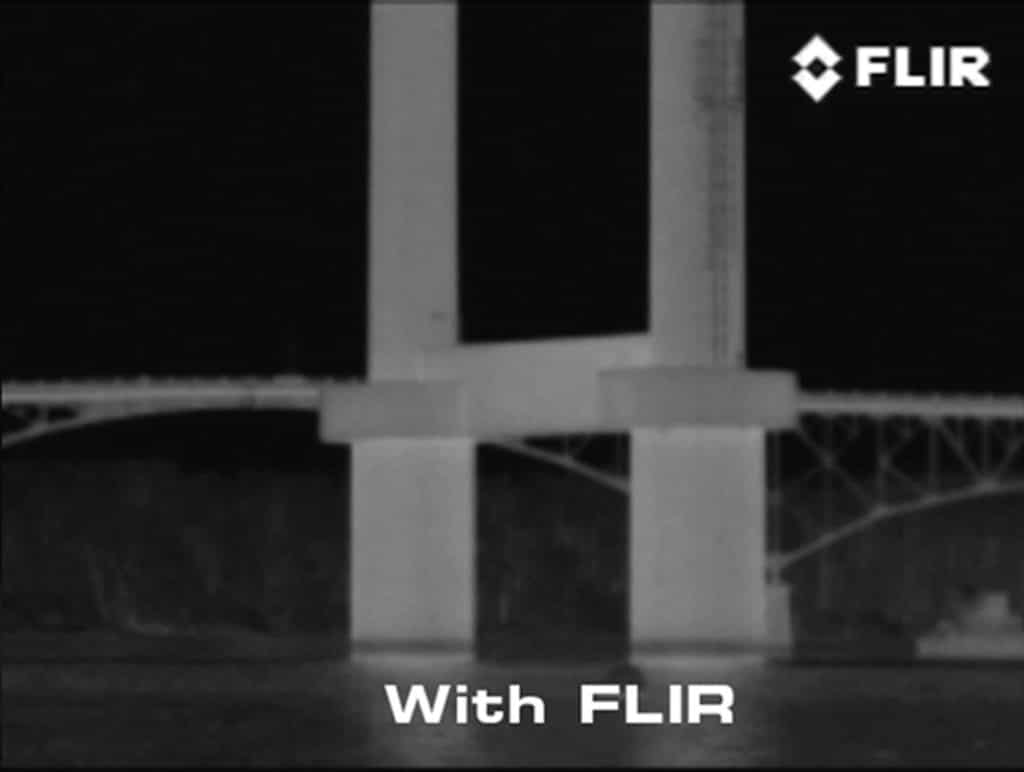
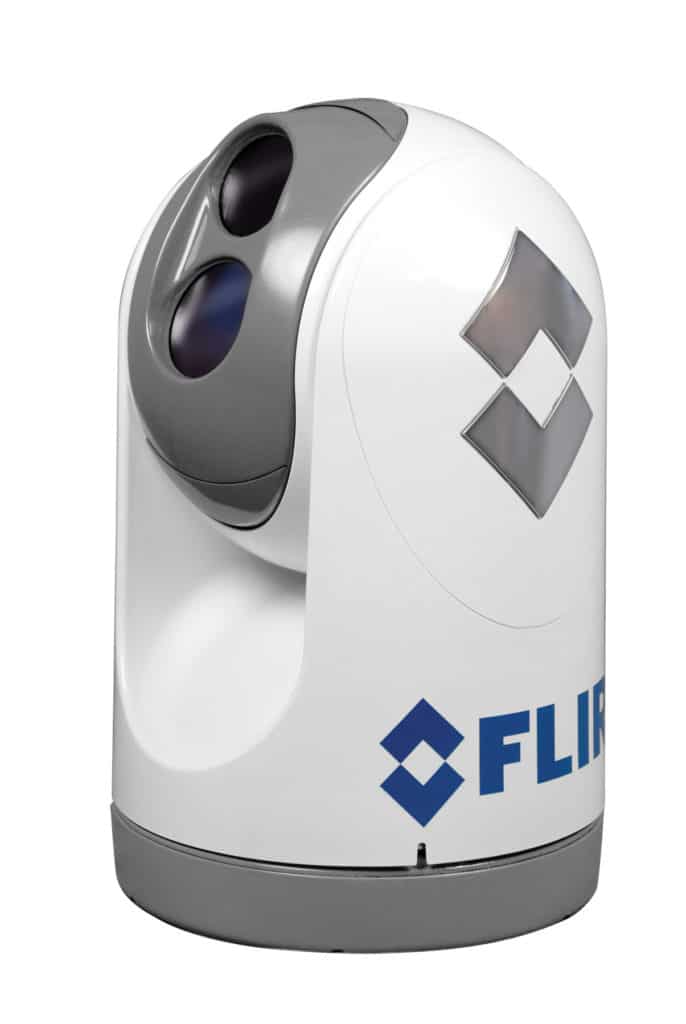
Flir Technology
